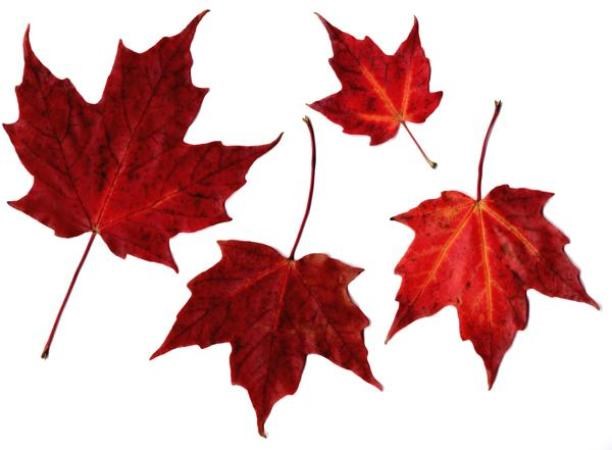Each year we celebrate our great country of Canada and it seems only fitting to focus on the maple trees for this column as our flag proudly displays a maple leaf. On Feb. 15, 1965, Queen Elizabeth II proclaimed that our new flag would be raised over Parliament Hill which displays the official colours of Canada (red and white) and a stylized 11-point maple leaf in its centre.
Maple trees belong to the genus Acer and there are more than 100 species of maples around the world. Most of the maples are deciduous and will often display spectacular colours in the autumn if the climate allows that development. In southern Asia there are a few native maples which are not deciduous so for those of us who are horticultural buffs, the exceptions to the norm continues!
From a botany perspective, the maple is a perfect tree. From the smallest detail to the overall proportion of the tree every characteristic is in duplicate. Each bud is matched by a twin bud that sits directly opposite of each other on the twig. Branches and leaves are also twins and even in the seed leaf patterns angles and curves of one side are the mirror opposite on the other. With the exception of the Manitoba maple all maple leaves are readily identified by their three- or five-lobed leaves, distinguished primarily by teeth and notches.
The wood of the maple is the second most important hardwood species in Canada. It rides on the tails of birch and is used for flooring, furniture, boats and the interior woodwork of many houses. In Ontario, we find native maples like sugar, black, red, silver, mountain, striped as well as the introduced Manitoba and Norway maples.
The Sugar maple (Acer saccharum) is native to the broadleaf forests in Ontario, Quebec and the Maritimes and extends as far south as Georgia. It thrives on deep, fertile and well-drained soils and is a one of our largest and most long-lived maples growing more than 35 metres in height and up to 90 centimetres in diameter. This maple has spectacular fall colour and also produces a sap that is reduced to produce maple syrup. Watch in upcoming columns for information about a new sugar maple with more cold tolerance!
On the prairies, the Manitoba maple (Acer negundo) is the most common large frame maple. They are without doubt the best tree for children to climb on as they have long spreading limbs that allow easy climbing. They also have a large area where they are found, from southern Manitoba to Ontario and south to Florida and New Mexico. It is rather shallow-rooted and short-lived. Poor weather conditions like wind and ice easily damage the structure as they have weak v-shaped crotches that will break with inclement weather.
The Big Leaf or Oregon maple (Acer macrophyllum) is found only along the western coast of British Columbia and have leaves that are up to 60 centimetres wide. It is an opportunistic maple as it is often one of the first trees to grow on a new site or clearing.
Watch for more about maples in the upcoming columns! Happy Canada Day!
Hanbidge is the Lead Horticulturist with Orchid Horticulture. Find us at www.orchidhort.com; by phone at 306-931-4769; by email at info@orchidhort.com; on facebook @orchidhort and on instagram at #orchidhort.



